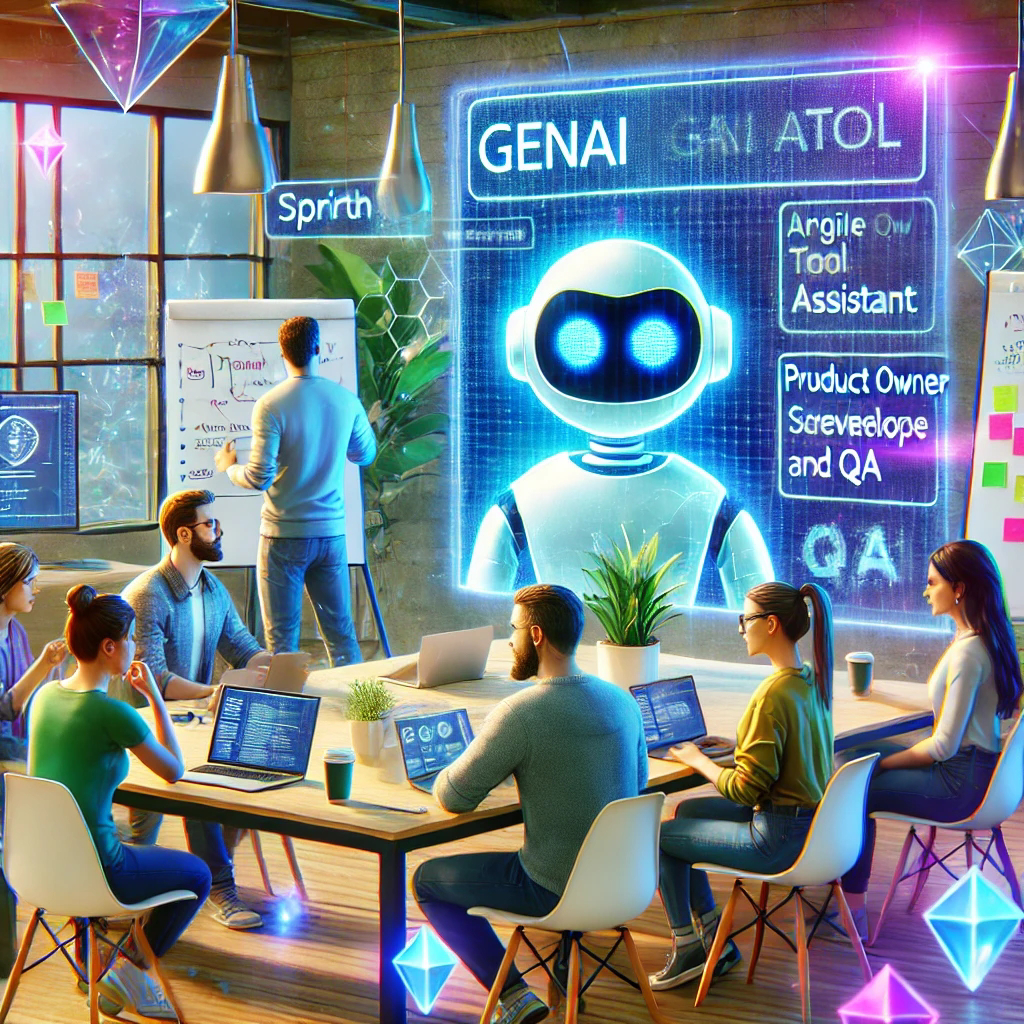Role Play of an Agile Team Collaborating with GenAI (ChatGPT)
Team Roles:
1. Product Owner (Sarah): Responsible for defining user stories, prioritizing the backlog, and ensuring the team delivers value to the customer.
2. Scrum Master (James): Facilitates the Agile process, removes impediments, and ensures the team is following Agile practices.
3. Developer (Alice): Writes code, develops features, and fixes bugs.
4. Quality Assurance (QA) Engineer (Mike): Ensures the product meets the quality standards, writes and executes test cases.
Scenario: Sprint Planning
Sprint Goal: Develop and deliver a new feature in the application to allow users to filter search results by multiple criteria.
Role Play:
1. Sprint Planning Meeting:
Sarah (Product Owner): Our main goal for this sprint is to implement the multi-criteria search filter feature. I've added the user stories to the backlog. ChatGPT, can you summarize the most important technical considerations we need to keep in mind for this feature?
ChatGPT: Certainly, Sarah. For a multi-criteria search filter, you should consider:
- Efficient query handling to maintain performance.
- Proper validation of user inputs.
- User-friendly UI/UX design for selecting multiple filters.
- Ensuring compatibility with existing search functionalities.
- Comprehensive testing to cover various combinations of filter criteria.
James (Scrum Master): Thanks, ChatGPT. This helps set the context. Alice, can you give us an estimate on the development time for this feature?
Alice (Developer): need to dive into the codebase to assess the impact on our current search algorithms. ChatGPT, could you help draft a plan for integrating these filters?
ChatGPT: Sure, Alice. Here's a basic plan:
1. Review existing search algorithms to understand where changes are needed.
2. Design a flexible system to add and combine multiple filters.
3. Implement the backend logic to handle filter combinations.
4. Update the UI to allow users to select multiple filters.
5. Write unit and integration tests to cover the new functionality.
Alice: This is a great start. I'll refine this and break it into tasks.
Mike (QA Engineer): Once Alice finishes, I'll need to ensure thorough testing. ChatGPT, can you suggest test scenarios for the new filter feature?
ChatGPT: Certainly, Mike. Here are some test scenarios:
- Validate that the filter works with single criteria.
- Test combinations of multiple criteria.
- Check performance under heavy filter use.
- Ensure that invalid filter inputs are handled gracefully.
- Verify that the filter interacts correctly with other search features.
James: Looks like we are set for this sprint. We will review progress in our daily stand-ups.
2. Daily Stand-Up Meeting:
James (Scrum Master): Alright, let's go around the room. Alice, how is the development going?
Alice (Developer): I've completed the backend logic for handling multiple filters. The UI is still in progress. ChatGPT, can you help me optimize the SQL queries for these filters?
ChatGPT: Of course. To optimize the SQL queries, consider:
- Using indexed columns for filter criteria.
- Avoiding full table scans by filtering in the WHERE clause.
- Using JOINs efficiently if multiple tables are involved.
- Testing with different datasets to ensure performance remains optimal.
Alice: Thanks, this will save me a lot of time.
Mike (QA Engineer): I've started drafting test cases. I’ll need to collaborate with Alice to understand the edge cases better. ChatGPT, do you think we should include performance testing in our scope?
ChatGPT: Yes, Mike. Performance testing is crucial, especially when combining multiple filters, as it can impact query execution time. I suggest running tests with different data volumes and filter combinations.
James: Great work, everyone. Let's keep pushing. If you hit any blockers, let me know so I can help remove them.
3. Sprint Review:
Sarah (Product Owner): The feature looks great! Alice, can you demo the new multi-criteria filter for us?
Alice (Developer): Sure, here is how it works. Users can select multiple criteria, and the search results update instantly. ChatGPT, can you help summarize the key benefits this feature brings to our users?â€
ChatGPT: Absolutely, Sarah. The multi-criteria search filter enhances user experience by:
- Providing more accurate and relevant search results.
- Reducing the time users spend searching for specific information.
- Offering flexibility in how users interact with the search functionality.
Mike (QA Engineer): All test cases passed, including the performance tests. Thanks, ChatGPT, for the optimization tips really helped!
James (Scrum Master): Fantastic! We've delivered value ahead of time. Sarah, lets plan the next set of features for the upcoming sprint.
Summary:
In this Agile team, ChatGPT serves as a valuable virtual team member, assisting with tasks ranging from technical planning to test case design. By providing quick access to information, optimization tips, and generating ideas, ChatGPT helps the team increase their productivity by reducing time spent on planning, troubleshooting, and routine tasks. This collaborative approach enables the team to focus on high-value activities, improving efficiency by 50% to 70% each week.

Comments
Post a Comment
Share this to your friends